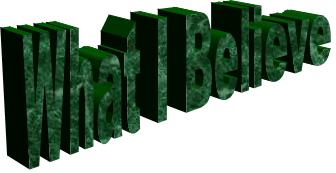Blogging through Markus Gabriel's Why the World Does Not Exist Pt. 7
This post completes my summary of Gabriel's first chapter. His introduction is summarised in four parts, all of which can be read here.
Markus Gabriel, Gregory S. Moss, trans., Why the World Does Not Exist (Cambridge: Polity, 2015)
Chapter I. What is this Actually: the World?
- You and the Universe
- Materialism
“The World is Everything that is the Case”What is the world? What is this totality to which we refer to with the word “world”? Clearly it is not simply the totality of objects in the world, but also the relation between objects, their particular way of interacting with one another and so on. Ludwig Wittgenstein saw this at the beginning of his Tractatus Logico-Philosophicus (see Gabriel, 33):
I The world is everything that is the case.“A fact is something that is true of something”, defines Gabriel (33). Once again, Gabriel establishes his point with a thought experiment: “Let us assume that only things exist, but no facts. In that case, nothing would be true about these things. For such truths would be facts” (33). Moreover, in certain scenarios there may be facts but no things (consider “barren nothingness” for example). It follows from all of this that the world is the totality of objects and facts. But there is more, because “object domains” also exist, including the object domain of the universe. Remembering Gabriel’s refutation of materialism, he means by “object domain” not merely objects that can be studied by the natural sciences. Indeed, there are several domains of objects, indicating that there are ontological provinces.
II The world is the total of facts, not of things.
But are these “ontological provinces” real? Or are they merely tricks of human speech? Is the distinction between the object domain of art history, for example, a different ontological province from the chemical and molecular constitution of pieces of art that can be studied in a laboratory? Maybe there are, then, no object domains in reality?
To answer this objection, Gabriel’s argument becomes a little more complex. First, he raises the notion of ontological reduction which is “undertaken when one discovers that an allegedly objective domain of discourse is – basically – mere idle talk” (234). He proffers the example of witches spoken about in Pope Innocent VIII’s bull. Now we know that these documents merely tell us something about the beliefs of mediaeval Catholics, they don’t give factual knowledge of witches casting successful spells and such like (37). In order, then, to understand that papal bull, some measure of ontological reduction is inevitable, which means that for many object domains an “error theory” is required, one which “points out the systematic error in a domain of discourse and traces this back to a series of erroneous assumptions” (38).
But, and this is key, this all means that we “cannot simply ontologically reduce all of the diverse object domains to a single one”. In order to do this one must help oneself to a particular method, which in turn assumes that there are several object domains, thereby refuting itself (see 38). The desire to reduce everything to one domain is too ambitious, simplistic and … lazy. It simply doesn’t follow that “all object domains are only human projections” (39).
Constructivism
This discussion naturally leads back to Gabriel’s opening criticism of constructivism, particularly the assumption that “we cannot discover any fact ‘in itself’” (39). He elaborates upon his rejection of constructivism at this point by sharpening the constructivist case. So he turns to “registries”, that “selection of premises, media, methods, and materials employed for the sake of acquiring knowledge and processing information” (235). Of course, there are very different registries. So, when one reads a poem, one could deploy registries that are structural, psychoanalytic, political and so on, all of which mean that we “register something differently” depending on the registry adopted. In other words, whatever humanly devised register is used will determine what is known. What is more, brain research has been used to endorse what Gabriel calls neuroconstructivism.The problems with all of this, however, are manifold. False conclusions are drawn, such as the claim that because human registries shape what is known, the facts must also be human projections. Facts remain facts irrespective of human perspective. What is more, if the neuroconstructivist case were to be believed, it immediately refutes itself as a theory claiming to state truth. Rather than offering a claim about reality as such, the neuroconstructivist theory must also remain a simulation, and literally a brainless one at that (see pp. 42-43). Better is to accept that “the conditions of the process of knowing are to be differentiated from the conditions of the known” (43-44).
His thought experiment, begun on page 41, draws attention to the rather mundane experience of sitting on a train and recognising that new passengers are boarding. This is used in order to expose the constructivist error, for passengers would have boarded the train whether someone observe them doing so or not. Their boarding remains, in other words, a fact. But this rather routine experience is helpfully used to question another constructivist claim, that “the interpretation of what is to be interpreted (an astronomical image, a literary text, a piano sonata) is much more complex than an everyday scene at the platform station” (44). But he rightly points out that even this – for some – daily experience involves complex and advanced epistemological apparatus, for “[n]o other animal on this planet is in the condition to know that passengers are boarding the train, because no other animal has the concept of trains or passengers” (44).
Philosophers and Physicists
This positions Gabriel to get straight to the point: because the world “has to be divided into domains” (which is what this section of the chapter has sought to defend), we are now in a position to ask what is meant by “the world”. It is, Gabriel claims, neither the totality of things nor the totality of facts; “it is the domain in which all existing domains are found” (45). Gabriel’s thesis is thus simply that all “there is no such thing as the domain of all domains” (45).This leads Gabriel to finish chapter one by refuting other accounts of the world, the whole. Stephen Hawking wrongly assumes that “the world” is synonymous with the universe, but this is a position that has already been amply refuted by Gabriel in the introduction. While one might allow such philosophical illiteracy from a scientist, even Jürgen Habermas has succumbed, becoming “overawed” by modern natural science such that he can speak of the world as a “regulative idea” as the “sum total of all that is knowable”, as the “totality of objects” (citing Habermas, 47). But if the world were the totality of objects, facts would not exist! This absurd position is compounded with the realisation that not all facts are knowable, something underscored by Heisenberg’s famous uncertainty principle. There are objects that disappear (or change) whenever one observes them, thus refuting Habermas’s central contention about “the world”. No, the world is rather the domain of all domains (Heidegger).










